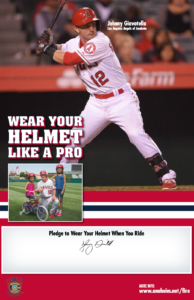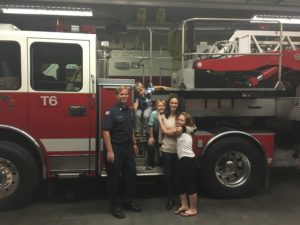Community Risk Reduction
On the surface, Community Risk Reduction should be an easy concept that everyone can agree on. The goal, as the name states, is to reduce the risk to our community. We can do this in many different ways. I think we can all accept the fact that it will look different for each community. A retirement community in a warm climate will have many different needs than a college town with harsh winters. Just as a small mountain community is different than a large metropolitan area.
CRR Process vs. Program
In many articles and social media posts related to Community Risk Reduction, I have noticed a common theme. Some departments, organizations, or individuals refer to Community Risk Reduction as a Process or a Program. At times, they even try to make a case for one term over the other. As I have contemplated these viewpoints, I have tried to pay close attention to the goals the Process or Program was trying to achieve. After all, it really doesn’t matter what we call something if it doesn’t achieve the desired results. Let’s take a closer look at the similarities and differences between CRR Process and Programs.
CRR Process
We will first take a look at those that feel Community Risk Reduction is a Process. I have also noticed that this group has the strongest opinion regarding CRR Process vs. Program. In their view, it seems, a program is a short-term solution to a problem and they see CRR as a much larger or global issue. One that can not be solved by doing or focusing on one thing. By this definition, I couldn’t agree with this group more. Community Risk Reduction can incorporate Fire Prevention, Elderly Abuse, Drug Abuse, Wildland Fire Preparedness, Flu Prevention, Resource Allocation, Staffing, Community Policing, or Hurricane, Earthquake, Tornado, Flooding Preparedness etc., etc., etc…
“Successful Community Risk Reduction Involves Far More than Just a Fire Department”
It seems there are so many ways to reduce risk, it could become an unsurmountable task. Please, don’t feel this way. Identify the risks in your community, and Prioritize the ones that fall within your responsibility. For those that fall outside of your responsibility, identify who’s responsibility it is and share the information you have collected with them. Successful Community Risk Reduction involves far more than just a Fire Department. We can’t do everything for everyone, nor should we. We have many opportunities to help and support each other.

Community Risk Reduction is a process. If we were able to completely eliminate the number one risk to our community, we would have a new number one priority pop up. As the infographic from Vision 20/20 above reflects, we are constantly evaluating our plan and making changes where necessary. It is a multi-step endeavor that we are always reevaluating for effectiveness and relevance.
CRR Program
We’ve just discussed how Community Risk Reduction is most definitely a Process. Does that automatically mean that those who favor the term Program are wrong? Fortunately, we can have two rights in Community Risk Reduction. I prefer to look at CRR Process and Program as a symbiotic relationship. Simply stated, our CRR Programs support our CRR Process.Think of Programs as where the rubber meets the road and the Process as the overall goal, mission statement, or ideal.
“CRR Programs support our CRR Process”
There are many types of CRR Programs. Once a risk has been identified, a program is created to reduce that risk. Many fire departments have implemented smoke alarm programs to combat the well-documented fact that working smoke alarms, installed in the correct locations, reduces the likelihood of a death caused by a fire. Some of these programs include PSA’s, free smoke alarms, and some departments even offer to install smoke alarms in homes. These are worthwhile programs and are based on the risk associated and the abilities of the local fire department.

A specific example of a Community Risk Reduction Program comes from Anaheim Fire & Rescue. They have a program called, “Wear your Helmet Like a Pro.” As part of their Community Risk Identification Process, they identified the need to reduce the number of head injuries to children related to riding bicycles, skateboards, and other sporting activities. Anaheim Fire & Rescue teamed up with their local professional baseball and hockey teams to support their efforts. They are able to get their important message out but also utilize grants and donations to supply helmets to children in their community.
Who’s the Winner, CRR Process or Program?
Whether you choose CRR Process or Program there is a clear winner. Your Community! When we follow a Community Risk Reduction Process and create Programs to reduce identified risks, the community wins. The department wins. Other communities can look at what we have done to learn how they can reduce the risks in their community. As you are progressing through your CRR Process and Programs, please, share what you are doing.Share your successes and learning opportunities. We cannot perform Community Risk Reduction alone. We must truly be a Community.
 Brent Faulkner is a founding member of MBIntel and now serves as its CEO. He has 20 years of experience in the fire service. During this time, he has responded to numerous emergency situations including structure fires, wildland fires, hazardous materials responses, emergency medical situations, and numerous types of rescues. In addition, he has served on a Type 1 Hazardous Materials Response Team for 14 years.
Brent Faulkner is a founding member of MBIntel and now serves as its CEO. He has 20 years of experience in the fire service. During this time, he has responded to numerous emergency situations including structure fires, wildland fires, hazardous materials responses, emergency medical situations, and numerous types of rescues. In addition, he has served on a Type 1 Hazardous Materials Response Team for 14 years.
Brent had a defining moment in his career which, as a result, lead him to MBIntel and his passion for Community Risk Reduction. He lead a team in critical infrastructure protection at a recognized Department of Homeland Security (DHS) Terrorism Fusion Center. This team was responsible for increasing the safety of critical infrastructure as it relates to terrorism, general security, and natural disasters. He also specializes in emergency preparedness for homeowners and businesses. He has a master’s degree in management, a bachelor’s degree in occupational studies, an associate’s degree in hazardous materials response, and another in fire science.
